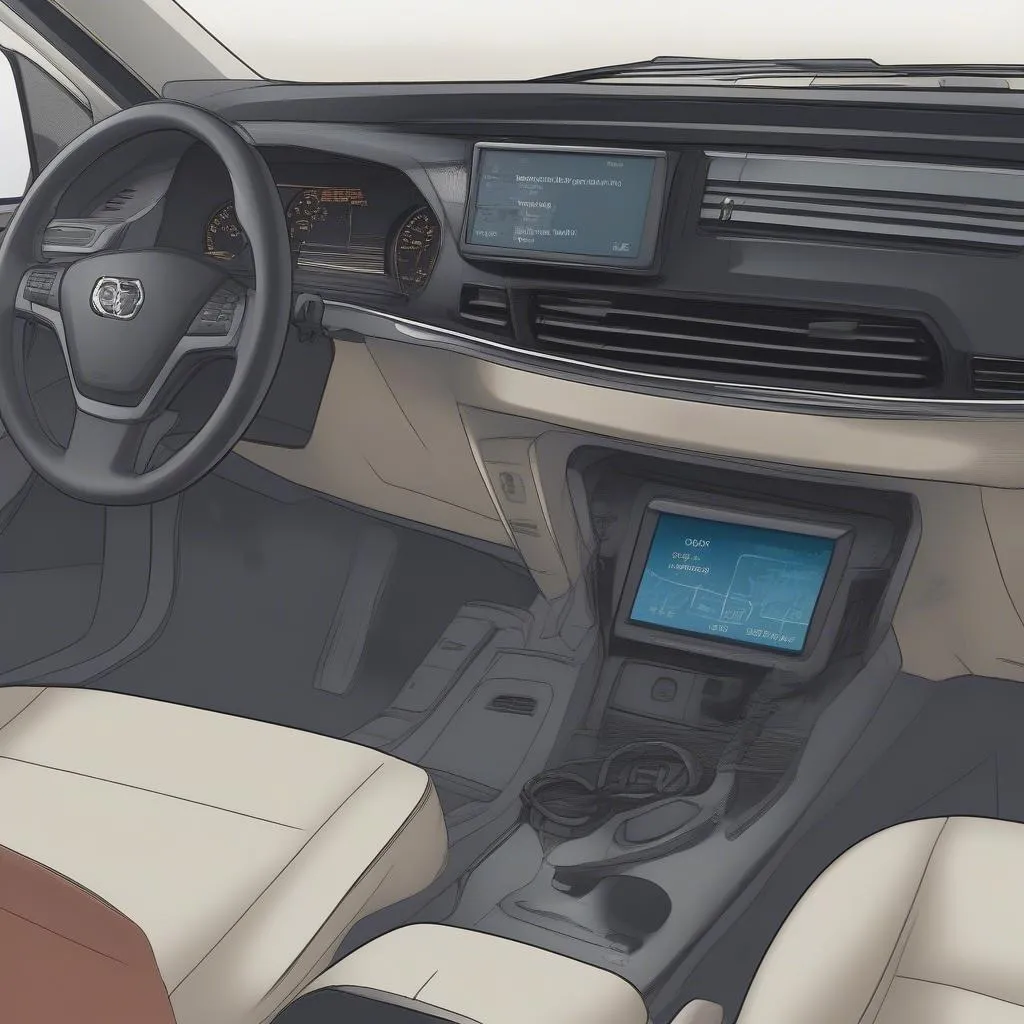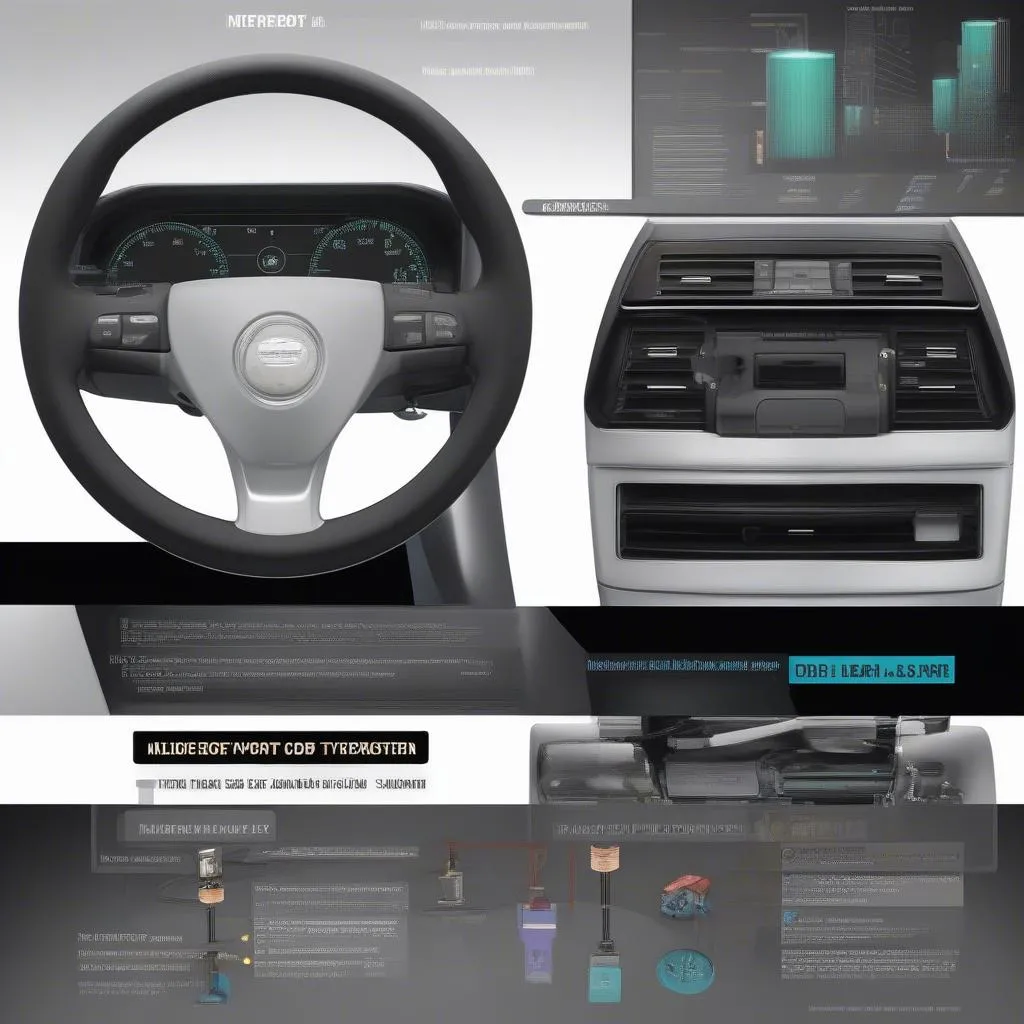Have you ever wondered what that small, rectangular port beneath your car’s dashboard is? Chances are, you’ve stumbled upon the OBD2 port, a key component in modern car diagnostics. But what exactly is it, and why is it so important? Let’s delve into the fascinating world of OBD2 ports and uncover its secrets.
The Importance of the OBD2 Port
The OBD2 port, short for “On-Board Diagnostics II,” serves as a vital connection between your car’s internal systems and the outside world. Imagine it as a window into your car’s health, allowing you to access a wealth of information about its performance, emissions, and potential issues.
From a Mechanic’s Perspective
For professional mechanics, the OBD2 port is a godsend. It allows them to quickly and efficiently diagnose issues by using a diagnostic scanner. This scanner can read codes stored in the car’s computer, indicating specific problems or malfunctions. Imagine a mechanic trying to fix a car without the OBD2 port – it would be like trying to find a needle in a haystack!
From a Technical Perspective
The OBD2 port adheres to a standardized protocol, meaning that any compatible scanner can communicate with any car equipped with it. This standardization ensures that mechanics have a common language to understand car diagnostics, regardless of make or model.
From an Economic Perspective
The OBD2 port has significantly impacted the auto repair industry. By making diagnostics easier and more accessible, it has reduced repair costs and increased transparency. This means you, as the car owner, can be more informed about your car’s condition and avoid unnecessary repairs.
Understanding the OBD2 Port: Frequently Asked Questions
1. Where is the OBD2 port located?
The OBD2 port is typically located under the driver’s side dashboard, near the steering column. However, its exact location may vary depending on the car model and year. If you can’t find it, consult your car’s owner’s manual or a reliable online resource like TechCarUSA for specific instructions.
2. Can I use a generic OBD2 scanner on any car?
Yes, any OBD2 scanner compatible with the standardized protocol will work on cars manufactured after 1996. This means you can find a generic scanner online or at an auto parts store and use it on your car.
3. What kind of information can I get from the OBD2 port?
The OBD2 port can provide information about various aspects of your car’s performance, including:
- Engine Performance: Check engine light status, fuel consumption, engine temperature, and more.
- Emissions: Monitor oxygen sensor readings, catalytic converter efficiency, and other emission-related data.
- Transmission: Access information about transmission fluid temperature, gear selection, and potential issues.
- Safety Systems: Review information about airbag deployment, anti-lock brakes, and other safety systems.
4. Can I use the OBD2 port to diagnose my car myself?
While some basic diagnostics can be performed by yourself using an OBD2 scanner, it’s always best to consult a professional mechanic for complex issues.
5. Can I use the OBD2 port to modify my car’s performance?
While there are some performance tuning tools available that can be connected to the OBD2 port, it’s important to proceed with caution. Improper modifications can damage your car’s engine or other systems.
6. What are some popular OBD2 scanners?
Some popular OBD2 scanners include:
- BlueDriver: Renowned for its comprehensive diagnostics and easy-to-use interface.
- OBDLink MX+: Offers a versatile solution with advanced features and compatibility.
- ANCEL ELM327: A budget-friendly option with basic diagnostic capabilities.
7. How do I find the OBD2 port for a specific car model?
Many online resources, including TechCarUSA, offer detailed information about OBD2 port locations for specific car models. You can search for guides by car make, model, and year on our website.
8. What if my car doesn’t have an OBD2 port?
Cars manufactured before 1996 might not have an OBD2 port. In such cases, you might need specialized equipment or contact a mechanic for diagnostics.
Conclusion
The OBD2 port is a powerful tool that empowers car owners and mechanics alike. By understanding its significance and functionalities, you can take control of your car’s maintenance and make informed decisions about repairs.
If you have any further questions or need assistance with your car’s diagnostics, feel free to reach out to our team of experts at TechCarUSA. We are dedicated to providing comprehensive support and guidance to all our valued customers.
Don’t hesitate to leave a comment below if you have any additional questions or experiences with OBD2 ports. We would love to hear from you!
 OBD2 Port Location
OBD2 Port Location
 Car Diagnostics
Car Diagnostics